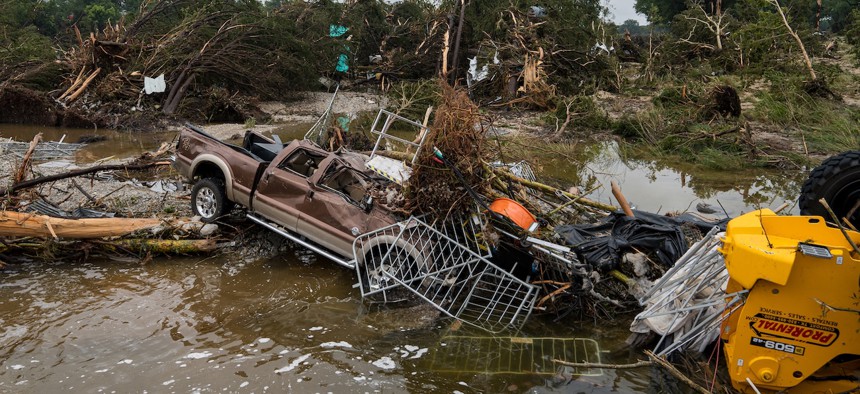Debate Surrounding Federal Cuts Following Texas Floods
In the wake of devastating floods in Texas, discussions have emerged regarding the implications of budget cuts made during the Trump administration on federal meteorological services. Senator Chris Murphy has pointed to these reductions, arguing that “accurate weather forecasting helps avoid fatal disasters,” hinting that personnel losses may have hindered the National Weather Service’s (NWS) ability to predict the catastrophic events effectively.
However, White House Press Secretary Karoline Leavitt contested these claims, asserting that the NWS was adequately staffed at the time of the floods. “These offices were well staffed… so any claims to the contrary are completely false,” she stated during a press briefing.
Review of Staffing Cuts
An investigation by BBC Verify scrutinized the staffing levels at the NWS under the Trump administration, which has seen staffing reductions due to a push for efficiency. Despite these cuts, experts indicated that the resources available during the floods in Texas seemed to be sufficient.
The proposed cuts include a significant 25% reduction in the budget of the National Oceanic and Atmospheric Administration (NOAA), slated to affect the fiscal year beginning in October 2026. While these budget changes will not directly impact the recent flooding events, staffing levels at the NWS had already decreased due to the administration’s strategies aimed at downsizing the federal workforce.
The Department of Government Efficiency (Doge), once led by Elon Musk, facilitated buyouts and early retirements, resulting in about 600 job losses within the NWS as members opted for voluntary redundancy or faced termination.
The Current Staffing Landscape
A report from the Associated Press highlighted that roughly half of the NWS offices recorded a vacancy rate of 20%, a significant increase from a decade prior. Yet, several climate experts affirmed that the forecasts and warnings issued just prior to the floods were executed as per protocols, amidst ongoing challenges with predicting extreme localized rainfall events.
A notable observation came from Avantika Gori, an assistant professor of civil and environmental engineering at Rice University, who stated, “The forecasts and warnings all played out in a normal manner.” Similarly, former NOAA climate scientist Andy Hazelton emphasized that the NWS did manage to disseminate adequate warnings, attributing no direct impact from staffing cuts during the event.
Local Offices and Communication Gaps
Experts raised concerns about the potential impact of staff reductions on local NWS offices in Texas and their communication with emergency services. Daniel Swain, a climate scientist from UCLA, noted that the flow of weather information may have been sub-optimal due to vacancies. Mr. Fahy, representing the NWS union, confirmed that key positions, like senior hydrologists and warning coordinating meteorologists at the San Angelo and San Antonio offices, were unfilled.
Nonetheless, both offices had increased their staffing temporarily in anticipation of severe weather, reflecting standard procedure in emergency situations. NWS spokeswoman Erica Grow Cei assured that all forecasts during the floods were issued promptly.
Impact on Weather Monitoring Tools
There have been claims about a reduction in weather balloon launches, which are vital for collecting atmospheric data. Meteorologist John Morales highlighted a 20% decrease in launches, suggesting that this could affect the quality of weather forecasts. The NWS confirmed reductions in launches in several locations, correlating them with staffing shortages, although weather balloon operations continued in areas surrounding the flood zones, gathering necessary data for accurate forecasting.
Table: Staffing Changes at the National Weather Service
| Category | Number of Staff |
|---|---|
| Total NWS Staff Pre-Cuts | 4,200 |
| Voluntary Redundancies | 200 |
| Early Retirements | 300 |
| Total Job Losses | 600 |
| Current Staffing Level | 3,600 |
As investigations continue, the dialogue highlights the critical role of the NWS and the complexities involved in emergency weather forecasting, particularly in light of funding decisions influencing operational capabilities.

